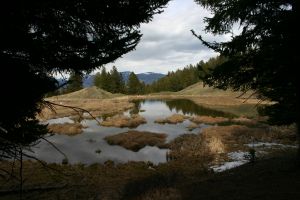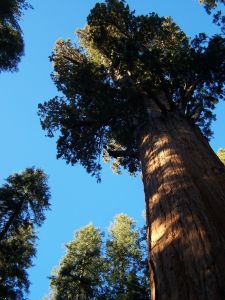March 26, 2010

Beaver Pond
Photo by: Pamela Anne (Stock Exchange)
Welcome one and all to AllCampgrounds, the best site on the web for info on camp grounds, nature travel, parks and more!
To kick off our journey through some of the greatest parks and camp grounds in the U.S., I thought we would visit the world famous Yellowstone Park.
Everybody has heard of it – it even inspired “Jellystone Park” of Yogi Bear fame – but do you know what makes it so special? You will after our virtual visit!
(more…)
March 16, 2010

Big trees of Sequoia National Park
Photo by: Mo Moore (Stock Exchange)
Welcome back to AllCampgrounds, fellow campers!
From today on, we’ll be beginning a whirlwind tour of major camp grounds, parks, and natural reserves throughout the United States.
There are thousands of camp grounds coast to coast to choose from, whether you’re camping RV resorts or looking for something a little more wild and rustic!
We’re not going in any particular order – variety IS the spice of life, after all – so I think we’ll pick up with KOA campgrounds, California. Expect to see famous, infamous, and just-about-unknown sights as we hit the trail
(more…)
January 30, 2009

Tent Camping
Photo by: K Rayker (Stock Exchange)
Once upon a time the most important advice a camper could adhere to was don’t pitch your tent facing into the wind, and dig a trench to avoid flooding. While it is still a good idea not to pitch your tent into the wind, digging holes or trenches could get you thrown out of some campgrounds today. So what can you do to ensure a safe and comfortable campsite?
Choosing a Spot to Set Up Your Tent
1. Make sure you arrive at the site before dark. You want to be able to check the area before you set up your tent.
2. Look for a flat area that is not at the bottom of a slope. What’s wrong with a slope? If it rains the water may run down the slope and flood your tent.
3. Avoid setting up to close to a stream or river, or even a lake if there is a chance of flash flooding.
4. Look for animal tracks. A large number of wild animal tracks in one area probably mean the animals use it frequently as a pathway. You don’t want any critters traipsing through your tent in the middle of the night.
5. Look for broken glass and trash as well as rocks and sharp branches. Unfortunately not all campers clean up after themselves.
6. Check for anthills and wasps nests.
7. Try to find a spot that is in the shade, but not directly under a tree.




